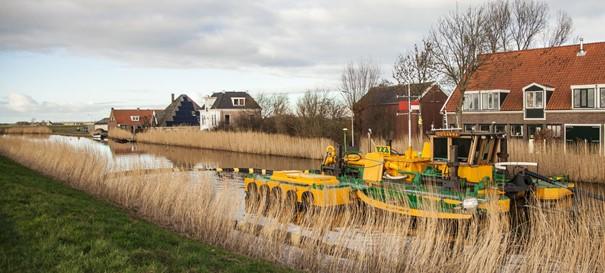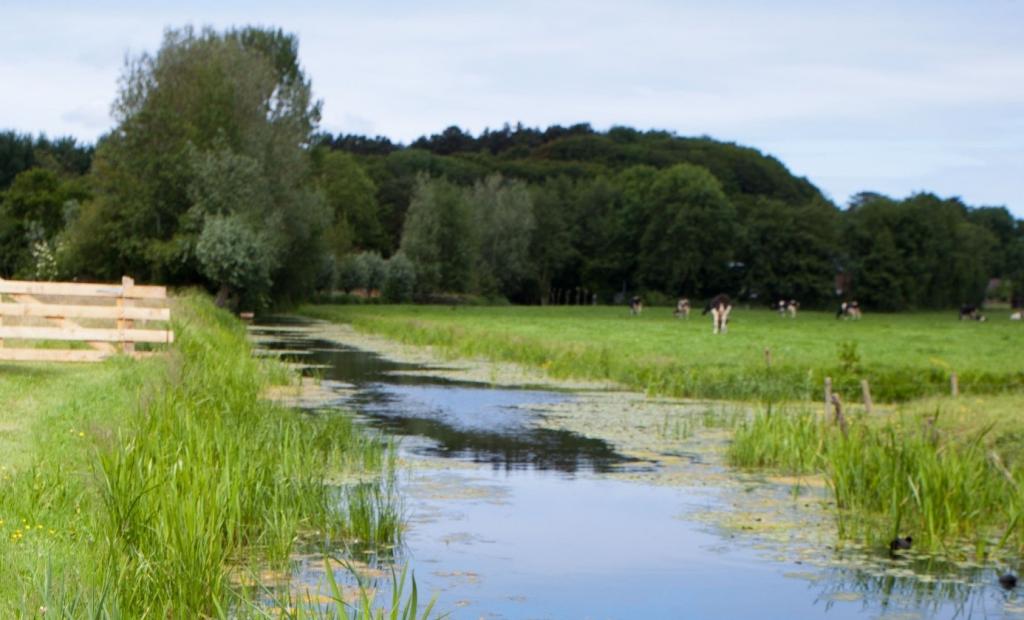Management and design
Mowing maintenance
Vegetation on the banks and in the water provides habitat for many species of plants and animals and increases biodiversity. It also provides structure and prevents the banks from eroding. With management and maintenance we ensure that this vegetation remains in good condition and that it does not interfere with the water supply and drainage. We find it important that species suffer as little as possible from the maintenance and can recover as well as possible. Together with our contractors, we work on methods and techniques that contribute to this, such as cutting aquatic plants above the bottom, allowing small aquatic animals to escape or alerting fish. How often we perform maintenance is tailored to each watercourse and bank. We lay this down in management plans. Nature-friendly banks, for example, are mowed less often. Moreover, we leave 10% vegetation along the banks and more where possible. We ask our maintainers to do ditch maintenance in the same way.
Dredging
The water bottom is important for water quality. Most of the (historically) chemical-polluted waterbeds in our area have now been cleaned up. We are also tackling the remaining polluted waterbeds. As a result, these waterbeds are no longer a source of chemical pollution. Over time, however, a layer of dredged material consisting of dead plant matter mixed with soil and silt particles forms on the bottom. To keep the ditch at the right depth, we remove this dredge at regular intervals. In some places we dredge especially to improve the water quality. We call this quality dredging and we do it for a number of reasons:

- elimination of aquatic soil as a source of nitrogen and phosphate in surface water;
- Prevention of oxygen deficiency in surface water due to decomposition of plant debris in the water bottom;
- Provide good soil structure for rooting aquatic plants;
- reduce surface water turbidity caused by suspended silt particles.
For a lasting positive effect of this quality dredging, it is important that the source of dredging is also addressed.
Furnishing
The design of the water and shoreline has much influence on water quality. Things like substrate, water depth and steepness of the slope help determine which species can occur. Variation in these provides different habitats. To illustrate, fish like to spawn in shallow water and need deep spots for overwintering.
Nature-friendly banks make an important contribution as they increase biodiversity, both on land and in the water. These banks have a gentle slope (gradual transition from land to water) and offer a variation of wet and dry conditions. This makes them a pleasant habitat for all kinds of plants and animals.
Through 2021, we have already constructed approximately 275 kilometers of nature-friendly banks. In the period 2022 - 2027 we plan to construct at least another 75 kilometers together with the province, municipalities and site managers. We are also paying attention to the management and maintenance or in some cases refurbishment of existing nature-friendly banks, including reed banks.

Level management
Water levels in our area are largely counter-natural, with fixed water levels in many places or just low water levels in winter and higher water levels in summer. In winter we drain excess precipitation to prevent flooding and in summer we make up shortages and flush where necessary for irrigation and to prevent desiccation, salinization or algal blooms. This is because much of the area is below sea level.
Regarding water level management, water quality benefits from retaining area-specific water, with a high water level in the winter period and a low water level in the summer period. Many areas are not set up for this, so adjusting water level management has major consequences for the risk of flooding, water availability and subsidence, in addition to economic damage. In the coming years we will therefore only adjust the water level in (sub)areas for which there is room in the water system. Where new opportunities arise in the future to adapt land use and development, we will investigate whether it is possible to adjust the water level and improve water quality.